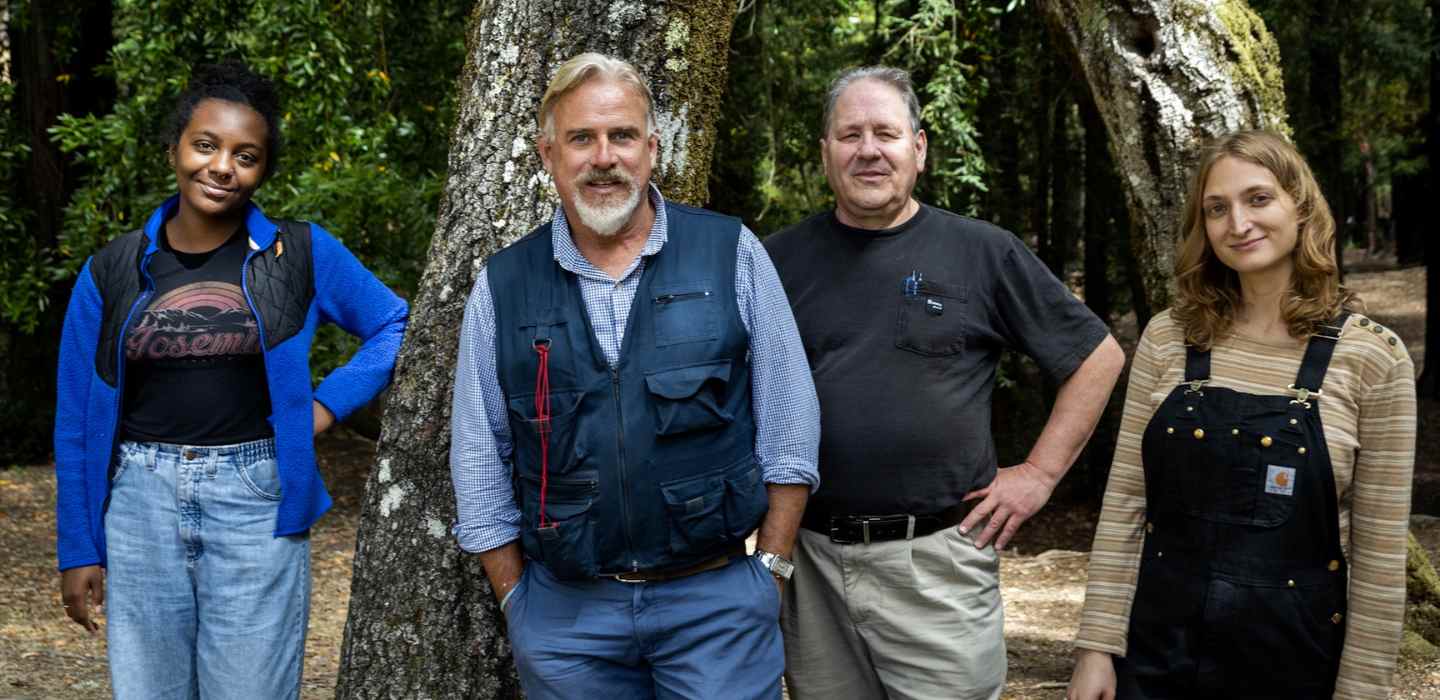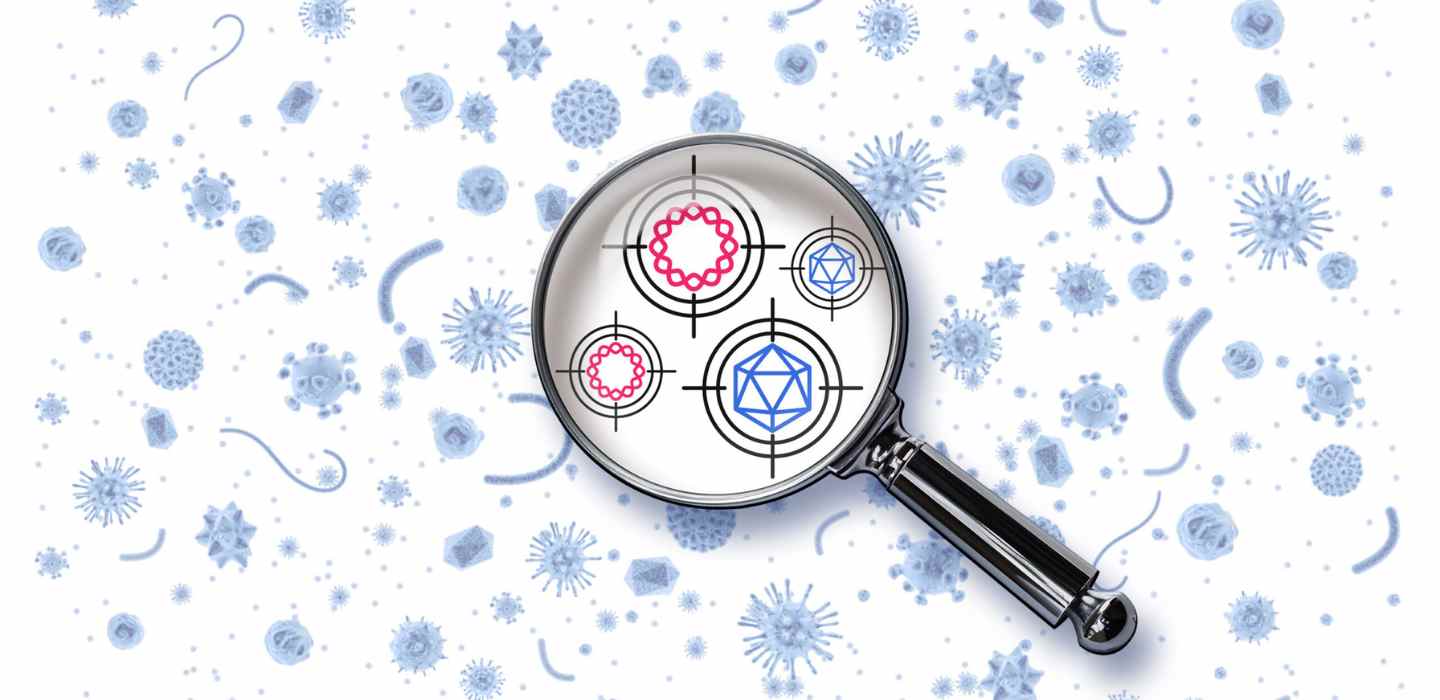The Joint Genome Institute (JGI) is a DOE Office of Science (SC) national user facility operated by Lawrence Berkeley National Laboratory (Berkeley Lab) to support research that advances the mission of the SC's Biological and Environmental Research program. The JGI provides cutting-edge genomic sequencing and analysis technologies and field-leading expertise to users who are investigating genomes to understand Earth systems and develop bio-based products and energy technologies.
First established in 1997, the JGI and its scientists have enabled decades of scientific progress. These seven projects showcase the breadth of impact that research conducted at the JGI has made.
In this 5-minute audio interview, listen as Nigel Mouncey, Director of the Joint Genome Institute (JGI), explains how this user facility supports the world's scientists.
The Pioneering Metagenomics That Led to CRISPR-Cas Gene Editing
Jennifer Doudna's research on the Nobel Prize-winning CRISPR-based gene editing is founded upon studies of environmental microbes by her UC Berkeley colleague Jillian Banfield. In the early 2000s, Banfield was collaborating with the JGI to develop the field of metagenomics - the approach used to analyze genomes of many organisms in tandem. Metagenomics allows scientists to study microbes in samples taken from the real world, where they exist alongside many other species.
In one project enabled by the JGI, Banfield collected samples taken from deep inside an old mine in California to investigate what types of hardy microbes could thrive in such an extreme environment. She noted that repetitive short sequences called CRISPR were present in the genomes of many diverse microbes living in the mine. Intrigued, Doudna and others began studying the functions of CRISPR, and soon discovered that the repeats are part of a bacterial immune defense system that identifies the DNA of invading viruses then deploys an enzyme to cut the DNA and neutralize the virus. Doudna later invented a process to engineer the system to cut any sequence of DNA, and the rest is history.
Labs worldwide now use CRISPR-Cas systems for efficient gene editing, with huge implications across biology, agriculture, and medicine.

Combatting Sudden Oak Death Through Genomics
Sudden oak death has been devastating forests and residential areas throughout California and Oregon since it was introduced to the U.S. in the 1990s. But we now understand how the causative pathogen, a microscopic mold, infects oak trees thanks to a collaborative effort to decode its genome involving multiple institutions and the JGI. The work is informing development of methods to protect trees from infection and limit further spread of the mold.
The collaboration also gave rise to a service that connects tree care specialists, foresters, and property owners to experts at UC Berkeley to conduct diagnostic tests for the mold, making it possible to prevent outbreaks. Stopping sudden oak death is not only important to maintain healthy ecosystems, but also crucial to the timber industry - it is estimated that the disease could cause $30 billion in losses if it progresses unchecked.

Setting the Standard for Microbiome Research
In 2011, researchers supported by the JGI user program published a paper describing how they'd used metagenomics to identify more than 27,000 genes from microbes found in a cow stomach. This study provided a proof point that metagenomics - which was a new technique at the time - allows scientists to investigate microbial activity without culturing the organisms, a big advance considering that 90% of known species can't be grown in a laboratory setting.
Within a large mixed sample containing the full genomes of many species, the team was able to specifically identify which genes code for enzymes that the microbes use to break fibrous, woody plant tissue down into simple carbohydrates that they (and the host cow) can consume for energy. JGI scientists and collaborators then studied the enzymes in depth, and figured out how to insert the necessary genes into easy-to-culture microbes, laying the foundation for biomanufacturing processes that make biofuels and other products out of plant waste.
The team's dataset later became material for a hands-on undergraduate biotechnology course that is now offered at several universities.

Sweet Success With the Sugarcane Genome
Modern hybrid sugarcane is one of the most harvested crops on the planet, used to make products including sugar, molasses, bioethanol, and bio-based materials. It also has one of the most complex genetic blueprints, featuring many replicated chromosomes and three times as many total base pairs as the human genome.
Sugarcane's complicated genetics made it the last major crop species without a complete and highly accurate reference genome. But last year, an international team announced the completion of a map of sugarcane's genetic code, using a combination of sophisticated DNA sequencing techniques at the JGI.
The map verified the specific location that provides resistance to brown rust disease, which devastates unprotected sugar crops, and identified the many genes involved in sugar production. These results will help scientists breed hardier, more productive crops for both sugar and bioenergy.

Unlocking the Popular Poplar Tree's Genome
Poplar trees are an excellent source of carbon to convert into biofuels and bioproducts because they grow quickly and hybridize easily. DOE researchers have been investigating the poplar genus for decades, working to develop hardy, pest- and drought-resistant strains that can be commercially grown to fuel the bioeconomy. Thanks to millions of years of evolution, the ideal adaptations already exist, they are simply spread across the genomes of diverse poplar species. To help wrangle the best genes for the job, in 2006 the JGI sequenced the genome of the prolific black cottonwood. It was the first tree genome ever to be sequenced, and the paper has since been cited more than a thousand times.
The JGI has since continued sequencing poplar species as well as the genomes of symbiotic fungi and bacteria in the root microbiome, helping collaborators identify key genes that could be engineered into an efficient crop. Scientists have also been utilizing the amassed genomic data to move closer to plant-based jet fuels.

Identifying Mobile Genetic Elements with geNomad
Mobile genetic elements (MGEs) are DNA segments that can move between microbes. The genes in MGEs can give microbes new abilities, such as adaptations to a changing environment. Among the most common forms of MGEs are viruses and plasmids. In 2023, the JGI launched a software tool to find viruses and plasmids that can be leveraged in various biotechnological applications. Known as geNomad, it is an annotation and classification framework that combines and builds on two standard techniques for identifying viruses and plasmids quickly and efficiently.
A key data analysis tool for studying global viral diversity, geNomad has been well received by the scientific community and downloaded thousands of times. It is also accessible through both the National Microbiome Data Collaborative's EDGE platform as well as NERSC, another user facility at Berkeley Lab.

The Switchgrass is Always Greener
Switchgrass is another plant species with big potential for bioproducts. This shrubby grass, native to North America, can grow year-over-year on marginal soil and with few resources. Despite the low maintenance, it can produce an impressive amount of biomass. Since 2007, the JGI has been supporting the DOE Bioenergy Research Centers' efforts to identify genes within the complex switchgrass genome related to biomass production, drought tolerance, and other traits that make it a viable candidate bioenergy feedstock crop. In 2021, in collaboration with the University of Texas at Austin, the JGI produced a high-quality reference genome based on samples of switchgrass taken from gardens across the eastern U.S. The genome is now available to researchers worldwide on the JGI plant data portal Phytozome.






